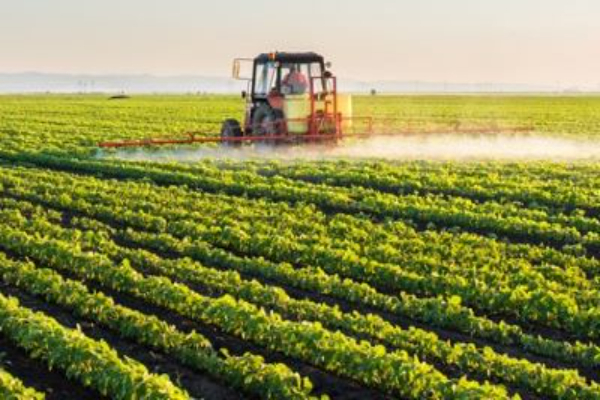Reduced GST improves input tax credits (ITC) for manufacturers, lowering production costs and enhancing competitiveness against imports.

In a significant move to provide relief to the agricultural sector, the Goods and Services Tax (GST) Council of India recently approved reductions in GST rates on several key agrochemicals and related agricultural inputs.
This decision, effective from September 22, 2025, addresses long-standing demands from the agrochemical industry and farmers for lower taxation on essential crop protection and nutrient inputs.
Previously, many agrochemicals such as pesticides and fertilizer precursors were taxed at rates ranging from 12% to 18%, which increased input costs for farmers and made quality products less accessible. The uniform reduction to 5% for targeted items is expected to lower prices, enhance affordability, and stimulate rural economic growth, aligning with the government's goal of doubling farmers' incomes.
Key GST Rate Changes for Agrochemicals
The revisions primarily target bio-pesticides, fertilizer acids, and micronutrients, which are critical components of agrochemical use in Indian farming.
Bio-Pesticides: Items such as Bacillus thuringiensis (varieties including israelensis, kurstaki, and galleriae), Bacillus sphaericus, Trichoderma viride, Trichoderma harzianum, Pseudomonas fluorescens, Beauveria bassiana, NPV of Helicoverpa armigera, NPV of Spodoptera litura, neem-based pesticides, and Cymbopogon-based products have been reduced from 12% to 5% GST. These eco-friendly alternatives to chemical pesticides are now more competitively priced.
Fertilizer Acids and Precursors: Essential raw materials like sulphuric acid, nitric acid, ammonia, and gibberellic acid (a plant growth regulator) have seen GST slashed from 18% (for acids and ammonia) and 12% (for gibberellic acid) to 5%. Inorganic fertilizers themselves were already at 5%, but this change reduces costs in the production chain.
Micronutrients: Those micronutrients listed under the Fertiliser Control Order, 1985 (produced by registered manufacturers), have been reduced from 12% to 5%. These include vital elements like zinc, boron, and iron supplements that enhance crop yields.
These changes are part of a broader package that also cuts GST on farm machinery, tractors, and irrigation equipment to 5%, creating a holistic support ecosystem for agriculture.
Impacts on Stakeholders
On Farmers:
Cost Savings: Farmers could see input costs drop by 7-13% for affected agrochemicals, translating to savings of ₹500-1,000 per hectare depending on crop type (e.g., rice, cotton, or vegetables). This is especially beneficial for high-input crops vulnerable to pests.
Affordability and Adoption: Cheaper bio-pesticides will promote sustainable farming practices, reducing reliance on harmful chemical alternatives and aligning with India's push for organic agriculture. It also eases the financial burden amid volatile input prices and climate challenges.
Overall Farm Economics: Lower costs are projected to improve net farm incomes by 5-10% in the short term, supporting the vision of enhanced rural prosperity. However, the full benefits may take 6-12 months to materialize as supply chains adjust.
On the Agrochemical Industry
Indian agrochemical industry, valued at over Rs. 50,000 crore and employing millions, has mixed reactions. Companies like UPL Ltd., PI Industries, Rallis India, and Best Agrolife stand to gain from increased domestic demand due to lower end-user prices, potentially boosting sales volumes by 10-15% in FY26.
Positive Effects: Reduced GST improves input tax credits (ITC) for manufacturers, lowering production costs and enhancing competitiveness against imports. It also rationalizes the tax structure, which was previously a barrier to innovation in bio-based products.
Challenges: The Crop Care Federation of India (CCFI) has opposed the cuts, arguing that they could flood the market with cheaper imports (already at Rs. 4,315 crore in FY23), eroding domestic market share and jobs. Without complementary measures like anti-dumping duties, this might pressure smaller Indian firms.
Finally, the GST reduction on agrochemicals to 5% marks a farmer-centric policy shift that prioritizes affordability and sustainability in Indian agriculture. While it promises substantial cost relief and productivity gains, its long-term success hinges on monitoring import competition and ensuring equitable benefits across the value chain.
This reform not only alleviates immediate fiscal pressures but also positions the sector for resilient growth amid evolving global trade and environmental demands. Stakeholders should watch for implementation guidelines from the GST Network to fully leverage these changes.
Subscribe to our newsletter & stay updated.